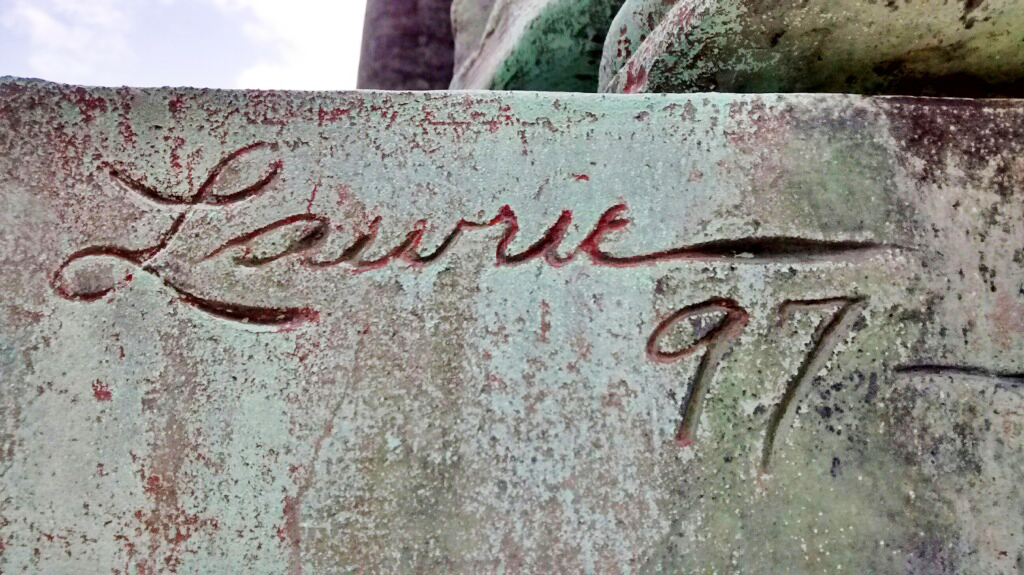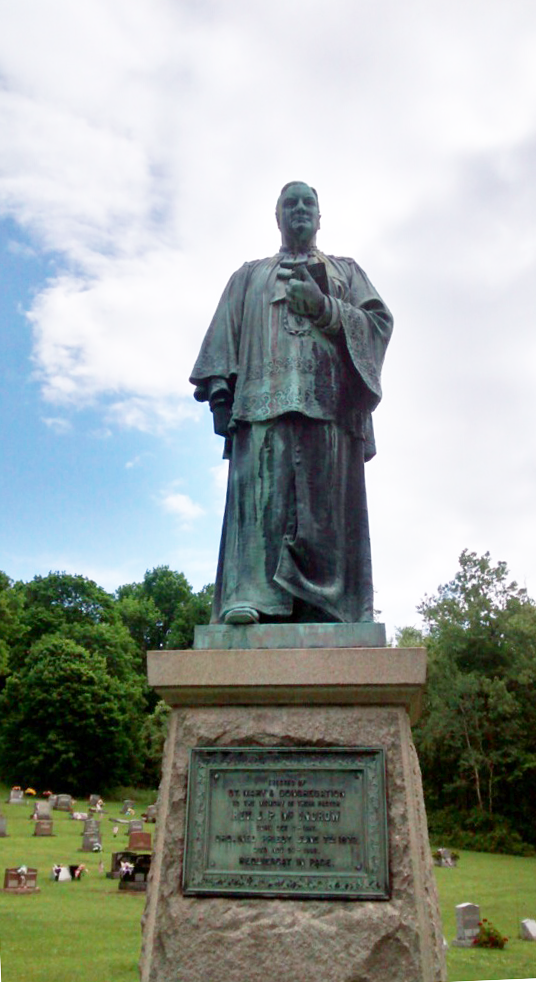
Here is Lawrie’s first and earliest sculptural commission. He created this statue when he was only 20 years old.
In his not-yet-published autobiography, “Boy Wanted,” Lawrie describes his unusual experience of creating his first life-sized bronze statue, of Father James P. McIncrow.
In his not-yet-published autobiography, “Boy Wanted,” Lawrie tells of his experience creating a memorial for one “Father Mackincrow” in New Amsterdam, New York. Lawrie was only a boy of 20 years old, when he got the commission to create this life-sized statue of Father James P. Mackincrow, as Lawrie spelled it. I searched for years to find any mention of this statue, but the all-knowing Google could produce no matches for Father Mackincrow.
By a stroke of luck, or maybe fate, I pondered; what if it was spelled differently? On my first guess for an alternative spelling, I Googled “McIncrow, and lo and behold, the post card pictured below popped up on dBay at the top of the search results,
Naturally,I immediately bought the postcard before it got away. Days later, when I received it in the mail, I decided to see what else I could learn about it. In my research, I contacted St. Mary’s Catholic Church in New Amsterdam, New York, and the kind ladies there at the church were nice enough to capture these photos of the monument. Ms.Elizabeth Baker is credited with these photographs of the monument, its plaque, and Lawrie’s signature on the granite base of the sculpture.
An antique postcard of Lawrie's First Commission.
The plaque on the statue.
Lawrie's signature from 1897. His first independent commission.
A view of the statue from the front left.
A straight-on view of the statue.
From "Prairie Deco:" The curious tale of how far Lawrie had to go to please the congregants.
Part 2 of the story of Lawrie's quest to get it right.
As Lawrie tells the tale, he had set up a temporary studio in an empty storefront in Amsterdam. Working from photographs, Lawrie created his likeness of the popular priest. But the congregants found fault in his work, telling him that it didn't resemble the late priest sufficiently. After working and reworking his model, he felt that he had to resign from the job. He mentioned this to a man named Hennesey, who had the commission for the granite base of the statue. Hennesey had a novel but rather macabre idea. To make a long story short, they opened the grave, Lawrie hopped in and studied the corpse and picked up enough detail to create the statue, that the congregation found acceptable. Whether they knew about how Lawrie got the likeness right, is lost to history.








